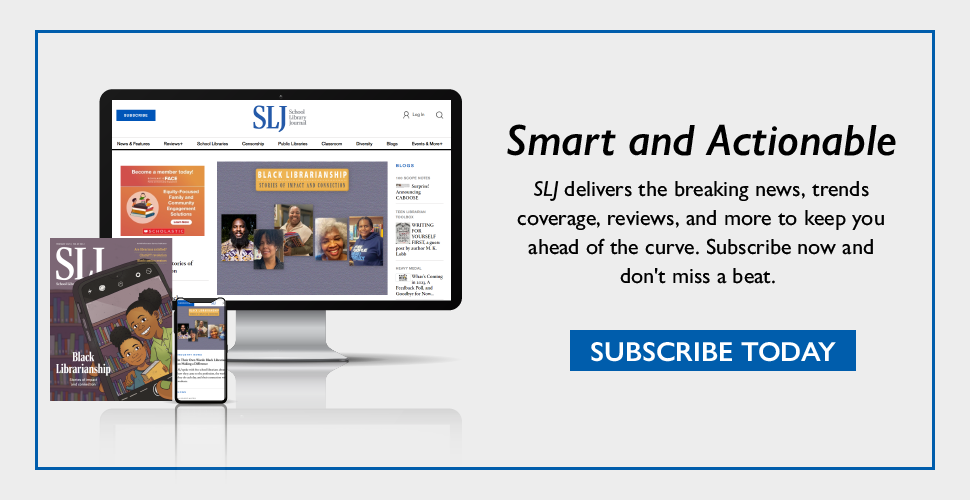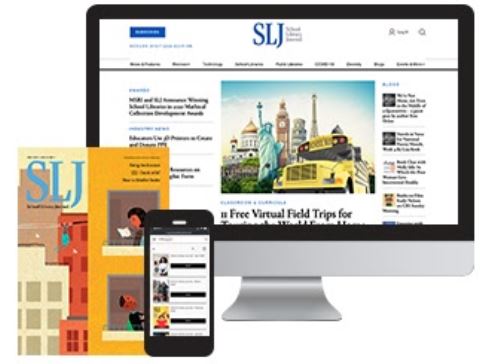The Key To Teaching College-Level Research
Inspired and informed by her academic peers, a K-12 school librarian rethinks her entire approach to college readiness.
As a school librarian who works with college-bound students, having them graduate prepared to tackle the rigors of college research, no matter the discipline, has been my goal. To reach it, I started using state benchmarks and reading articles to ensure I was on track. When my students begged me for the 15th time, “Can we please stop doing annotated bibliographies?”
I determined a simple way to guide my college-readiness lessons: Talk to a college librarian.
Over subsequent conversations with many college librarians, I found that the problem isn’t a lack of skill or understanding research. It’s about contextualizing skills so students have a more holistic, comprehensive view of the research process. I evolved my lessons to help students understand that perspective.
I started by making a call to a public college near the school where I used to work. That illuminating conversation helped guide my curricular planning. My proudest moments were when alumni would come back to my library for a quick hug and brag, “I am my professor’s favorite because I actually know how to cite correctly/use a database/evaluate a source!”
 |
Illustration by Thomas Pitilli |
Last year, I took a new job at a K–12 independent school. I spent my first year trying to get a full picture of the research program, and again asked: Are we working toward the right goals? I decided to talk to more college librarians and expanded my project. I came up with a list of questions about specific research skills and citation issues (yes, annotated bibliographies were still on the list), and consulted the college advisers at my school about a list of colleges and universities.
Halfway through my second interview, though, I realized that I needed to change my focus. I was speaking with Hale Polebaum-Freeman, the first-year outreach librarian at Williams College, when our conversation veered from searching techniques on specific databases to whether or not students truly understand what the process of searching really entails.
Polebaum-Freeman posited that understanding the research process is crucial to the framework of a liberal arts education and an attitude of lifelong learning. This led to a discussion about the place of research within the curriculum as an art and science to be understood on its own, not simply in service of term papers. I switched gears. In subsequent interviews, after running through my questions about hard skills, I asked, “What do you wish students knew about research before they arrive at your campus?”
Put simply, every college librarian reported that the students are missing the forest for the trees. They can do specific tasks but are missing the bigger picture of research. School librarians have to do more work to prepare them.
I pulled the three most essential themes from my conversations with the college librarians, and followed each with practical applications for school librarians who work with all ages. The most crucial items to tackle are research as an iterative process, the complexity of searching, and understanding sources.
These themes are scalable for any student’s age. Here are some ways you can reinforce the themes every year, while naming the skills so that students can build their research toolkits.
 |
Susannah Goldstein (above) designed a new teaching plan after speaking to academic librarians (l. to r.): Philip Swan, Lisa Stillwell, Hale Polebaum-Freeman, Amanda Peters, Faith Rusk, and Jeremiah Mercurio. |
Build in some reflection
One major challenge college librarians identified is that students saw research as a quick step in the project, and many employed what I call a “smash and grab” approach to research: get in, grab a ton of sources, and get out. Students often see research as a linear process, which means that the first sources they acquire are often the ones that they use. Lisa Stillwell, associate librarian for research services at Franklin & Marshall College, says that her best advice for students is to slow down and consider the iterative nature of research. That was echoed by every college librarian interviewed. Students need to take the time to assess their sources, tweak their strategies, compare results—and consider whether or not they are even answering the research question. College librarians reported that students often begin research with the thesis in mind and seek sources to confirm their thesis, instead of beginning with a broad research topic and letting the sources guide research in a more web-like process.
Lesson for school librarians: Build more reflection time into research. This year I instituted research check-ins in many grades throughout the K–12 span. Fourth graders spend a few minutes at the beginning of each class in self-reflection, asking: Do I have information in each of the five categories about my insect’s life? What information am I missing? What information am I having trouble finding?
After that, they each write three action items for that class on a Post-it note and get to work. This check-in helps them organize their results, consider what is missing, identify next steps, and request intervention. It can be as simple as checking back with the W column on a KWL (“Know, Want To Know, Learned”) chart and discussing what they still want to know, haven’t found out, or are having trouble finding.
In high school, we created a Google form with quick survey questions covering everything from source collection to citation issues. Students filled it out at the midway point in their research, and the spreadsheet was shared with their teachers. This enabled students to engage in guided self-reflection, and it helped us identify teens who needed extra attention during research periods. Time can be short, but this small adjustment paid off. Students became focused and more open to help.
Next year, I will expand the check-ins. My hope is that students will eventually begin to do check-ins on their own as the practice becomes more familiar. I also want to focus on evolution of research questions. Philip Swan, head of research and instruction at Hunter College, teaches his students about the process of topic exploration. This is something we should also focus on throughout K–12—teaching students that research questions can and should evolve, and that research is not meant to confirm a thesis. This can be reinforced in the research reflection questions you choose. Inquire about surprising information that has changed a student’s thinking, or whether a student’s thesis has shifted throughout the research process.

Teach keywords
A common refrain among college librarians is “There is no one magic search!” Many students come to college feeling comfortable on one platform, unwilling to open up their search strategies. They only want to use JSTOR or Gale PowerSearch (or Google, obviously), and don’t utilize the powerful and specialized databases within their college libraries. Amanda Peters, student engagement librarian at the University of Michigan, reports that students are often confused as to when a federated search (one that pulls results from multiple databases at once) or a specialized database would be best. They miss out on powerful research tools as a result.
Lesson for school librarians: Teach fewer demo lessons about specific databases and more lessons about search strategies that can be applied across platforms. For younger students, teach more keyword activities and show them how keywords act in different engines and sources. Instruct middle school and high school students in using federated searches as well as individual databases and when each is more useful, but don’t limit it to one platform.
When time is short and I want to make sure students can maximize a specific database for a project, I create short screencasts for the library website, highlighting navigation tools for individual databases. This can also be a great support for students with learning disabilities or English language learners.
The saved class time can be used to inform students about strategies that will benefit them in higher-level situations and across platforms: refining within results, executing journal runs (finding one journal that has good scholarship on your topic and searching within that journal), and pearl growing (turning one good source into many by mining citations or subject headings). Other strategies include forward chaining (finding other articles that cite a useful article) and backward chaining (using a useful article’s citations to find other good sources). These all pay off as students’ academic learning deepens.
Annotated bibliographies for the win
Faith Rusk, information literacy instruction librarian at the University of the District of Columbia, argues that source evaluation is at the root of both research and citation issues. Rusk says that students tend to place sources on a “good or bad” scale—identifying each source as inherently bad (unreliable) or good (reliable). This framework, often inherited from high school, means that students aren’t assessing for relevance or usefulness, and don’t understand that authority is constructed and contextual. Once they decide that the source is “good,” as long as it is generally about their topic, they are satisfied. The article is now simply a place to find quotes or confirm their thesis. The inclination to “smash and grab” further means that students are primarily concerned with “aboutness” and authority and miss the arguments of the texts.
“Research is a conversation between sources,” says Jeremiah Mercurio, head history and humanities librarian at Columbia University. Students’ tendency to collect sources in one fell swoop, and then focus on “good” or “bad” as the only metric of evaluation, means that they miss that conversation. Mercurio, along with Anice Mills, undergraduate services librarian at Columbia, encourages students to focus on the tension between texts, as well as the tension within a text.
Lesson for school librarians: Yes, this is where annotated bibliographies come in! This activity for high school students moves research from a necessary step in service of the main activity (a paper) onto the center stage. Annotated bibliographies force students to consider the conversations within a source and between sources—to move beyond “aboutness” and think about what the source is truly saying.
Every college reports that professors assign annotated bibliographies regularly, so high school is a great time to hone the skill. School librarians need to teach source evaluation in all grades in a value-neutral context. We should move away from “good” or “bad” and guide students to think about how each source fits into the research conversation.
This work can begin in elementary school. In research groups, students can examine two to three age-appropriate sources for a student-driven topic and discuss the similarities and differences, while also discussing source evaluation: How does Ranger Rick compare to the ASPCA in providing information about dogs? In upper grades, students also need training in reading academic writing. What does it look like? What are the markers? How do you navigate an article?
With a few tweaks, school librarians can change how our students view research. It isn’t about teaching more skills. It’s about reconsidering the ones we’re already teaching, and thinking about how to scaffold all grade levels so our students can see the forest and the trees.
![]()
SLJ’s Information Literacy/College Readiness Survey Report |
 Susannah Goldstein is a school librarian at the Brearley School in New York City.
Susannah Goldstein is a school librarian at the Brearley School in New York City.
Add Comment :-
RELATED
The job outlook in 2030: Librarians will be in demand
The job outlook in 2030: Librarians will be in demand
ALREADY A SUBSCRIBER? LOG IN
We are currently offering this content for free. Sign up now to activate your personal profile, where you can save articles for future viewing






